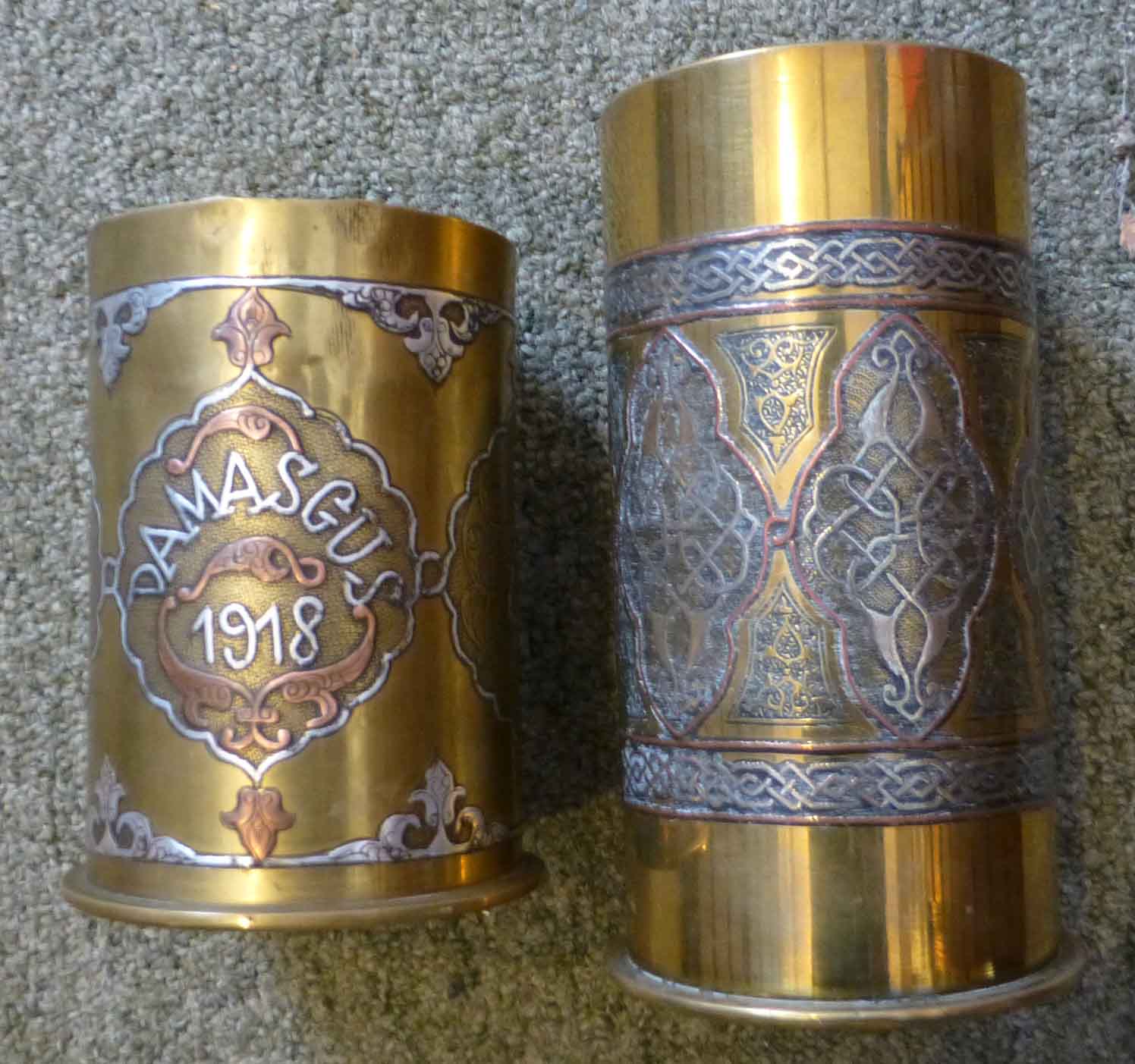Decorated Shell Casings - Inlaid


The next form of decoration involves the inlaying of copper and silver into the design. This form of decoration is peculiar to North Africa and the Middle East theatres with Damascus being a centre for production of this sort of ware, as seen in the left hand image. Some will have the names of places etc in roman script, such as Damascus, Sea of Galilee etc, while others will have Islamic text and designs.
The one variation to these themes is shown on the right. These are shell cases decorated at the Bezalel School of Arts in Jerusalem in the 1920s. The school was founded in 1906 by Boris Schatz. At the end of 1914, when Turkey enters the war on the side of the Central Powers, the Turks decide to deport anyone they suspect as possessing the potential of serving as a 'fifth columnist'. Accordingly, they deport Boris Schatz to Damascus and the School of Arts is closed down. In 1918, with liberation by Allenby, Shatz returns from exile and re-opens the School. The students lost no time in recognising the opportunity to make souvenirs of the conflict. With no Islamic laws on representations of living things etc, the artists at Bezalel were free to explore their creative side.
While some stick to geometric patterns, perhaps aiming to sell to Muslim customers, others have images of the Chief Rabbi of Jerusalem, animals, biblical scenes and the one in the centre has a sort of Trajan’s Column, with a band of stone age men with rocks and spears at the base, a band of Greek warriors in chariots in the centre and a band of First World War era soldiers, trucks etc going round the top – the three ages of warfare. Here also are two shells decorated with the Royal Army Medical Corps crest, both made to sell to men of that regiment stationed in Jerusalem after the war.
The School struggled financially, and closed down in 1929, not re-opening until 1935, so their output of trench art can be attributed to that initial period, 1919-1929.
